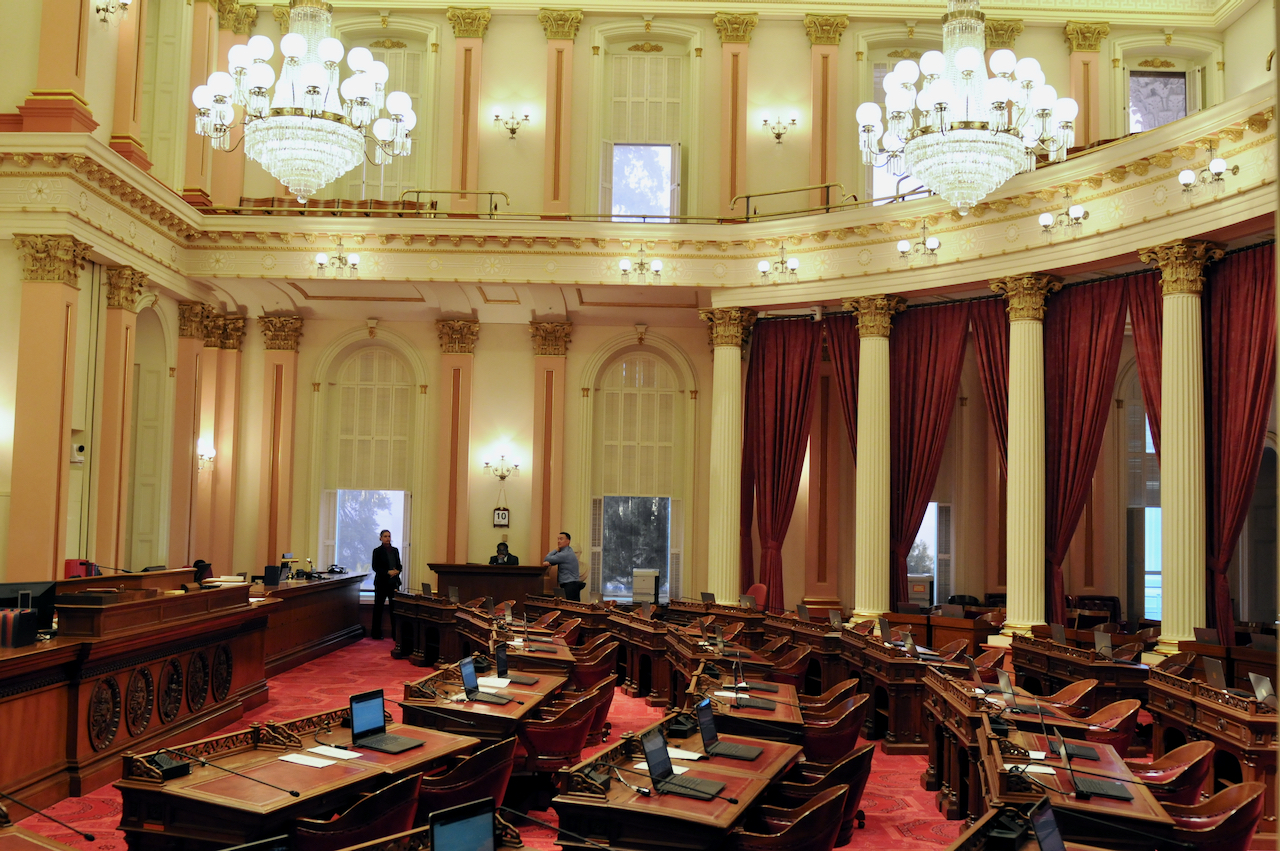
California State Capitol. (Photo: Kevin Sanders for California Globe)
Frequently Asked Questions about Common Canons of Statutory Construction
What is the Rule of Lenity?
By Chris Micheli, June 6, 2024 2:30 am
What is the Constitutional Avoidance Canon? Under the Constitutional Avoidance Canon, statutes will be construed, if possible, to avoid questions about their constitutionality. The fundamental principle of the Constitutional Avoidance Canon is that a court should interpret the Constitution only when it is strictly necessary to do so.
What is the Rule of Lenity? The Rule of Lenity, in which penal (or criminal law) statutes whose purpose is to punish offenders must be construed strictly or narrowly. The Rule of Lenity is a canon used in criminal law, sometimes called the “rule of strict construction,” that an ambiguous statute is to be construed against the state.
What is the Rule of the Last Antecedent? The Last Antecedent Rule is a doctrine of interpretation of a statute, by which “Referential and qualifying phrases, where no contrary intention appears, refer solely to the last antecedent.” This means that any qualifying words are to be applied to the words or phrases immediately preceding the qualifying word or words, and are not interpreted as extending to other words.
What is the Serial Comma Rule? Under the Serial Comma Rule, in a series of three items where each is set off by a comma, each item should be viewed as independent of each other.
What is the Whole Act Rule? The Whole Act Rule provides that statutory provisions should be interpreted so they have a whole, coherent meaning. In other words, identical words in the same or related statutes should have the same meaning ascribed to them. The Whole Act Rule is a textual canon that provides, when construing a statute, the text of the entire statute as a whole must be considered by the court.
What is the Rule Against Surplusage? The Rule Against Surplusage explains that different words in the same statute cannot have the same meaning. In other words, one word is not duplicative or redundant of another word found in the statute.
What is the Ejusdem Generis Canon? Ejusdem Generis guides the courts to interpret catch-all phrases to be limited by the specific words around them. This canon is used for interpreting loosely written statutes. Again, it is used if the statute lists certain things and the list ends with a general statement to include other things (which legislative drafters refer to as a “catch-all”), then a court will assume that the general statement only includes things that are similar to the items listed.
What is the Expressio Unius Canon? Expressio Unius provides that a list of words with no catch-all means that the inclusion of specific words suggests the exclusion of other words. In other words, when a statute includes a list of specific items, that list is presumed to be exclusive and, therefore, the statute applies only to the listed items and not to other that are not listed.
What is the In Pari Materia Canon? In pari materia means “on the same subject or matter.” This is a doctrine of statutory construction that statutes that are on the same subject must be construed together. In other words, if a statute is ambiguous, the court may apply this canon and look to the rest of the statute, or the surrounding statutory scheme, in order to determine the meaning of the ambiguous statute.
What is the Noscitor Canon? Noscitur a Sociis guides us to interpret words or phrases in light of the other words around it in the statute. In other words, the courts should interpret an ambiguous word or phrase by taking into account the words used and phrases used in their textual context. Noscitur a sociis is used for interpreting questionable words in a statute.
- Interpretation of Arbitration for International Disputes - January 9, 2026
- Uniform Partnership Act in California - January 9, 2026
- State Revenues for Fish and Game - January 8, 2026



